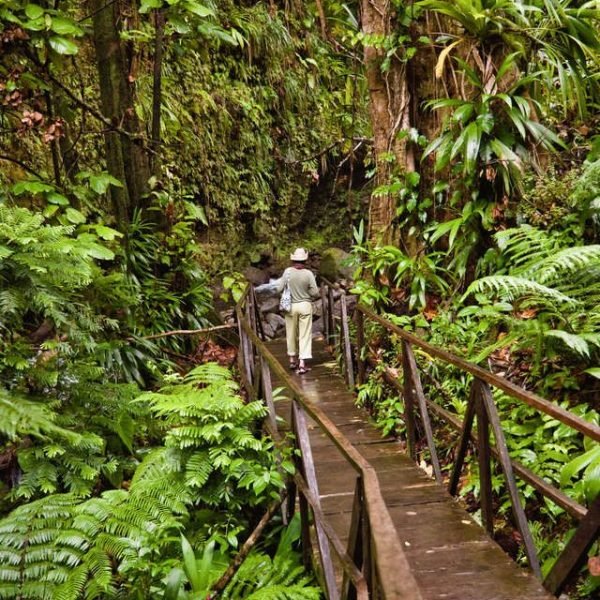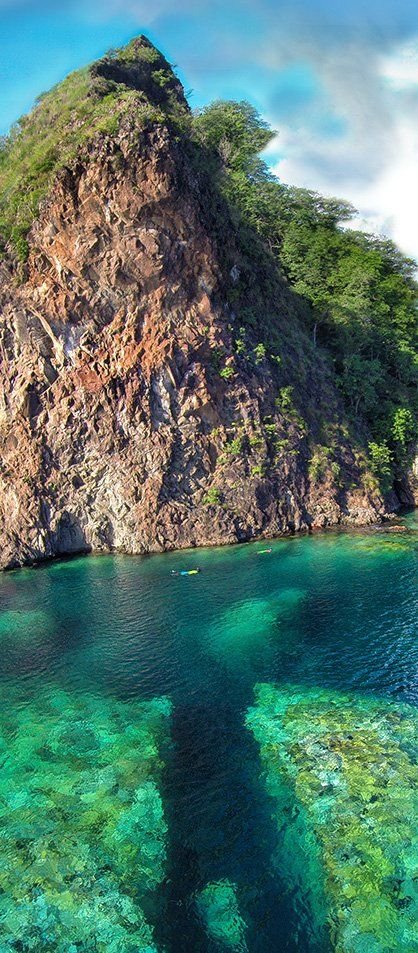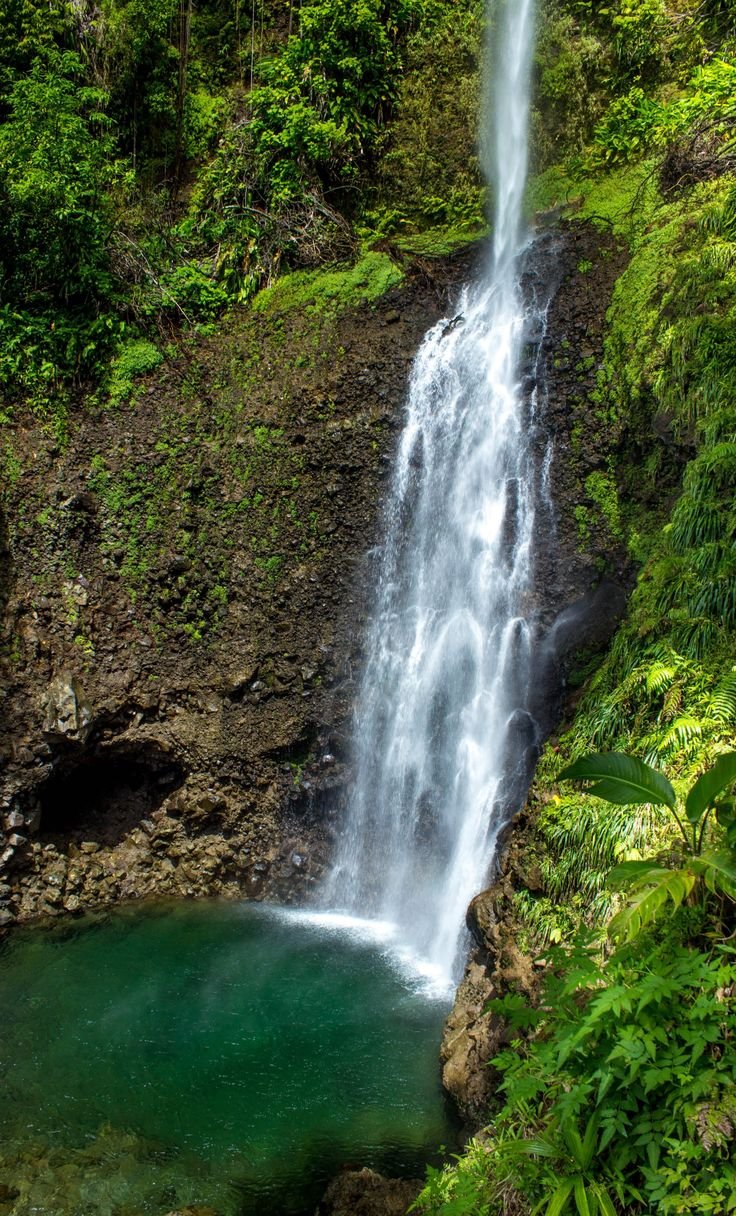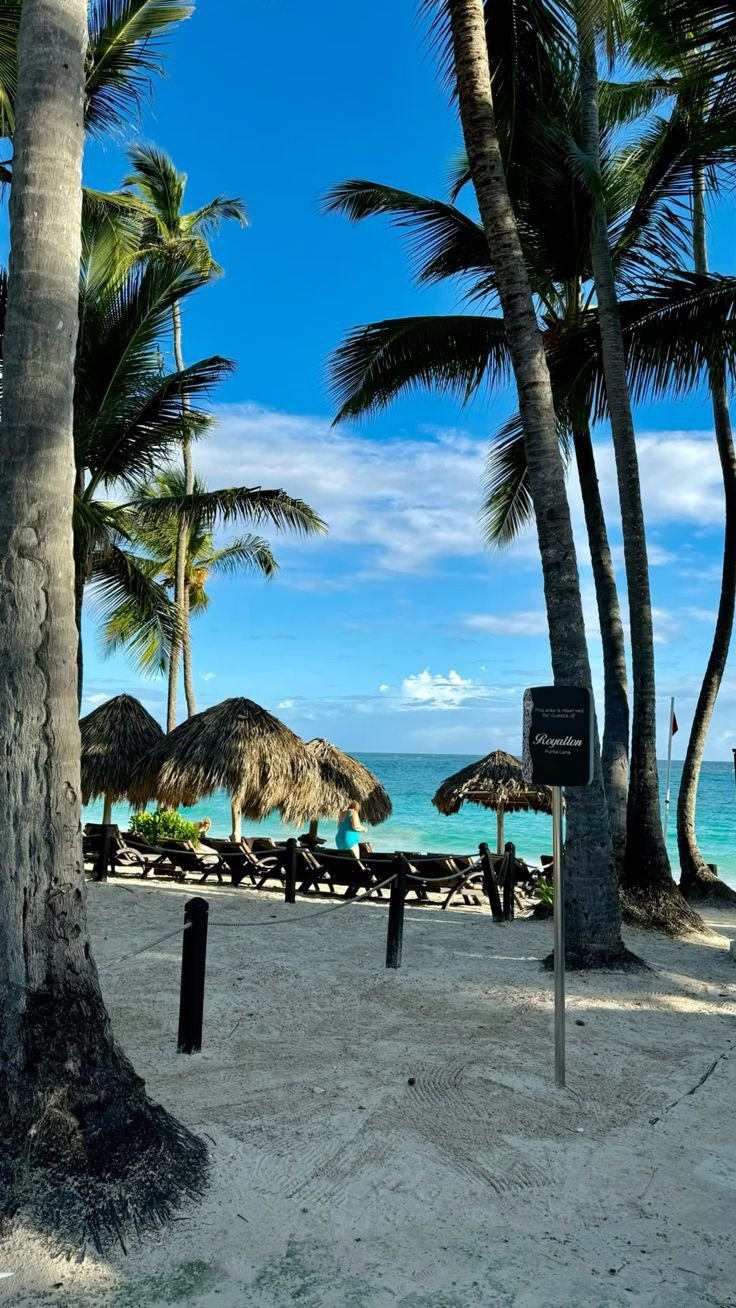Dominica
Welcome to Dominica
Tucked away in the eastern Caribbean Sea, Dominica is a rare gem known as the “Nature Island” for its lush rainforests, dramatic volcanic peaks, and unspoiled natural beauty. Unlike its more commercialized neighbors, Dominica offers an authentic escape into a world where rivers outnumber roads, hot springs bubble beneath the forest canopy, and adventure awaits at every turn. Whether you’re a passionate hiker, a wildlife enthusiast, or simply seeking tranquility far from the crowds, Dominica promises a travel experience that is both invigorating and restorative.
Dominica spans just 290 square miles (751 square kilometers), but its landscape is staggeringly diverse. The island is blanketed in emerald-green rainforests, carved by deep gorges and cascading waterfalls, and fringed by black and gold sand beaches. It is home to over 365 rivers-one for every day of the year-along with natural hot springs, volcanic peaks, and the Caribbean’s only boiling lake. The capital, Roseau, is a vibrant hub of Creole culture, colorful markets, and friendly locals who embody the island’s warm spirit.
Dominica stands apart in the Caribbean for its commitment to sustainability and ecotourism. Much of the island remains protected, making it a haven for rare wildlife, including the endangered Sisserou parrot. The island’s volcanic origins have gifted it with a rugged terrain perfect for hiking, canyoning, and river tubing, while its surrounding waters teem with marine life, offering world-class diving and snorkeling.
Why Visit Dominica?
1.
Unspoiled Nature and Adventure: Dominica is a paradise for outdoor enthusiasts. Hike through dense rainforests to discover hidden waterfalls, soak in natural hot springs, and trek the Waitukubuli National Trail-the longest hiking trail in the Caribbean. The island’s rivers, lakes, and volcanic landscapes offer endless opportunities for adventure, from canyoning and river tubing to exploring the mystical Boiling Lake.

2.
Rich Culture and Authentic Experiences: Unlike many Caribbean destinations, Dominica remains largely untouched by mass tourism. Visitors are welcomed into a vibrant Creole culture, with opportunities to experience traditional music, cuisine, and festivals like Carnival (“Mas Dominik”) and the World Creole Music Festival. The island’s Kalinago Territory offers a unique chance to learn about the indigenous people who have called Dominica home for centuries.

Planning Your Trip
Visa Information
Dominica welcomes travelers from many countries without the need for a visa for short stays, particularly those from the European Union, United States, Canada, and most Commonwealth nations. Visitors typically receive a stay of up to 21 or 30 days upon arrival. However, requirements can vary based on nationality, so it’s essential to check with your local Dominican consulate or embassy before traveling. Ensure your passport is valid for at least six months beyond your planned departure date
Best Time to Visit
Dominica enjoys a tropical climate with warm temperatures year-round, making it a destination for all seasons. However, understanding the island’s weather patterns can help you plan the perfect trip:
- Dry Season (December to May): This is the most popular time to visit, with less rainfall and comfortable temperatures ideal for hiking, outdoor adventures, and exploring the island’s natural wonders. The dry season is also perfect for diving and snorkeling, as underwater visibility is at its best.
- Wet Season (June to November): The rainy season brings lush, vibrant landscapes and fewer tourists. While showers are frequent, they’re often brief and rarely disrupt outdoor activities. However, this period coincides with the Atlantic hurricane season, so travelers should monitor weather updates and consider travel insurance for added peace of mind.
- Festival Season: For a cultural immersion, visit during Carnival (February or early March), when the island erupts in color, music, and revelry. The World Creole Music Festival in October is another highlight, celebrating Dominica’s rich musical heritage with performances from local and international artists.
Getting To and Around
Getting to Dominica
Dominica is accessible by air and sea, though its remote location means travel requires a bit of planning:
- By Air: Dominica’s main airport, Douglas-Charles Airport (DOM), receives regional flights from neighboring Caribbean islands such as Antigua, Barbados, St. Lucia, and Puerto Rico. International travelers typically connect through these hubs. Canefield Airport (DCF) near Roseau handles smaller regional flights.
- By Sea: Ferries connect Dominica to nearby islands like Guadeloupe, Martinique, and St. Lucia, making island-hopping a scenic option. Cruise ships also call at Roseau and Portsmouth, bringing day visitors to the island.
Getting Around
Dominica’s rugged terrain and winding roads can make getting around an adventure in itself:
- Car Rentals: Renting a car or 4×4 is the most flexible way to explore the island, especially if you plan to visit remote hiking trails or beaches. Driving is on the left, and a temporary local driving permit is required, which can be obtained from car rental agencies or the police station.
- Taxis and Buses: Taxis are widely available, particularly in Roseau and at the airports. Fares are fixed for popular routes but should be agreed upon in advance. Public minibuses run between towns and villages, offering an affordable way to travel, though schedules can be irregular.
- Guided Tours: For those seeking expert insights and hassle-free transportation, guided tours are available for many of Dominica’s top attractions, including the Boiling Lake, Trafalgar Falls, and the Indian River.

Accommodation
Dominica offers a diverse range of accommodations that cater to every type of traveler, from budget-conscious backpackers to luxury seekers. The island’s lodging options blend comfort with the natural environment, often emphasizing eco-friendly practices and personalized service to complement Dominica’s reputation as the Caribbean’s “Nature Island.”
Hotels and Resorts
For travelers seeking modern comforts with stunning views, several oceanfront hotels provide excellent amenities. The Fort Young Hotel and Dive Resort in Roseau is a top choice, featuring modern rooms with breathtaking ocean and mountain vistas, a buffet restaurant, a pool, and an on-site dive shop. Its central location makes it convenient for exploring the capital and nearby attractions. This hotel is highly praised for its service and scenic setting.
Another popular option is The Champs Hotel, perched on a hilltop offering panoramic sea and park views. It is known for its spacious, clean rooms, fantastic pool, and personalized service, including arranging excursions. For those who desire a more intimate and nature-immersed stay, Pagua Bay House Oceanfront Cabanas provide spacious cabanas with stunning ocean views and home-cooked meals, nestled within the island’s lush surroundings.
Cottages and Eco-Lodges
Dominica’s eco-conscious travelers often choose charming cottages and eco-lodges that emphasize sustainability and a close connection to nature. Picard Beach Cottages offer simple, comfortable wooden cottages along the west coast, ideal for those who want beach access and a peaceful atmosphere. Similarly, Sea Cliff Eco-Cottages & Gin Distillery combines attractive, well-equipped cottages with a unique local gin distillery experience, perfect for families and nature lovers.
Mango Island Lodges is another boutique option, highly recommended for its personalized service, beautiful rooms with stunning views, and delicious food. It caters especially well to honeymooners or travelers seeking a blend of adventure and relaxation.
Guesthouses and Budget Stays
For budget travelers, guesthouses like Soufriere Guesthouse provide clean, comfortable accommodations with friendly hosts. These options often include basic amenities such as hot water, fans, and communal spaces, offering a cozy and authentic island experience without the luxury price tag. Riverside Hotel is another good choice, offering rooms with full kitchens and easy access to nearby beaches.
Unique Stays and Practical Tips
Dominica also offers unique accommodations such as the Sunset Bay Club & SeaSide Dive Center, which is praised for its welcoming staff and scenic location, making it a favorite home base for divers and adventure seekers.
Practical Tips
- Many accommodations include breakfast, which often features local fruits and Caribbean specialties.
- Air conditioning is available in many hotels but less common in budget guesthouses; ceiling or floor fans are typical.
- Booking ahead is advisable, especially during peak seasons (dry season and festivals), to secure preferred lodging.
- Car rental assistance and personalized itinerary planning are commonly offered by boutique hotels and lodges.

Food and Drink
Dominica’s culinary scene is a vibrant reflection of its rich cultural heritage, blending indigenous Kalinago, African, French, and Creole influences. The island’s food is fresh, flavorful, and often sourced locally, making dining in Dominica an essential part of the travel experience.
Local Cuisine
Dominica’s cuisine centers around fresh seafood, tropical fruits, root vegetables, and spices. Popular dishes include:
- Callaloo Soup: A hearty green soup made from dasheen leaves (similar to spinach), often cooked with coconut milk, crab, or salted meat.
- Mountain Chicken: Despite its name, this is actually a local frog delicacy, considered a delicacy and prepared in stews or fried.
- Fish Broth: A flavorful soup made with fresh fish, vegetables, and herbs.
- Saltfish and Bakes: Salted codfish served with fried dough, a popular breakfast or snack.
- Roti: A flatbread filled with curried meats or vegetables, reflecting Caribbean Indian influences.
- Fresh Tropical Fruits: Mangoes, papayas, guavas, passion fruit, and soursop are abundant and often enjoyed fresh or in juices.
Dining Options
- Local Restaurants and Street Food: Small eateries and street vendors serve authentic, affordable meals. These are great places to sample traditional dishes and mingle with locals.
- Hotel and Resort Dining: Many hotels offer on-site restaurants featuring both international and Caribbean cuisine, often highlighting fresh, local ingredients.
- Farm-to-Table Experiences: Some eco-lodges and boutique hotels emphasize farm-to-table dining, where guests can enjoy meals prepared with ingredients grown on-site or sourced from nearby farms.
- Seafood: Given Dominica’s island nature, seafood is a staple. Lobster, conch, crab, and fresh fish are commonly featured on menus, often grilled or stewed with island spices.
Drinks
- Local Rum: Dominica produces excellent rum, and tasting local varieties is a must. Some accommodations, like Sea Cliff Eco-Cottages, even incorporate local distilleries into their offerings.
- Fresh Juices and Smoothies: Made from the island’s abundant tropical fruits, these are refreshing and widely available.
- Caribbean Coffee and Tea: Locally grown coffee and herbal teas are popular, especially in cooler mountain areas.
- Cocktails: Classic Caribbean cocktails like rum punch, mojitos, and piña coladas are commonly served at bars and resorts.
Food Festivals
If your visit coincides with local festivals, you’ll find food to be a central part of the celebrations. The World Creole Music Festival and Carnival feature street food stalls offering a variety of Dominican specialties and festive drinks.
Tips for Dining
- Try to eat at least one meal in the Kalinago Territory to experience indigenous culinary traditions.
- Many restaurants accommodate dietary preferences, but it’s advisable to communicate any special needs in advance.
- Tap water is generally safe to drink, but bottled water is widely available and recommended for visitors.

Must-See Attractions
- Boiling Lake
One of Dominica’s most iconic natural wonders, the Boiling Lake is the world’s second-largest hot spring lake. Located within Morne Trois Pitons National Park, a UNESCO World Heritage Site, this steaming, bubbling lake is a surreal sight-a gray-blue caldron of water heated by volcanic activity beneath the surface, reaching temperatures between 180 and 197 degrees Fahrenheit. Visiting the Boiling Lake requires a full-day, challenging hike through dense rainforest and rugged terrain, best undertaken with an experienced guide. The trek rewards hikers with breathtaking views and a unique encounter with one of the planet’s rare geothermal phenomena.
- Trafalgar Falls
These twin waterfalls, known locally as the “Mother” and “Father” falls, are among Dominica’s most accessible and popular natural attractions. Nestled in lush jungle surroundings, the falls cascade dramatically into cool pools where visitors can swim and refresh themselves. A moderate hike leads to a viewing platform that offers spectacular photo opportunities. Nearby hot springs provide a soothing way to relax after the trek.
- Emerald Pool
A serene and enchanting spot, Emerald Pool is a natural swimming hole fed by a waterfall, surrounded by verdant forest. The trail to the pool is relatively easy, winding through tropical flora and fauna, making it suitable for families and casual hikers. The pool’s clear, cool water offers a refreshing dip amid the island’s vibrant greenery.
- Titou Gorge
A natural canyon carved by water over centuries, Titou Gorge features crystal-clear pools and cascading waterfalls. Visitors can swim through narrow slot canyons and explore the gorge’s dramatic rock formations. This attraction is famous for its appearance in the “Pirates of the Caribbean” films, adding a touch of cinematic allure to its natural beauty. Strong swimming skills are recommended for this adventure.
- Indian River
The Indian River is one of Dominica’s most picturesque waterways, rich in wildlife and history. It was featured in several “Pirates of the Caribbean” movies, enhancing its fame. Visitors can take guided boat tours through the mangrove-lined river, spotting exotic birds, iguanas, and lush vegetation. The river holds cultural significance as it was once home to the indigenous Kalinago people. Tours often end with a stop at the famous Bush Bar, where you can enjoy a refreshing rum punch in a tranquil rainforest setting.
- Batibou Beach
While Dominica is not renowned for extensive beaches, Batibou Beach stands out as a secluded, pristine stretch of black sand framed by palm trees and forest. Accessible by a short hike, this beach offers a peaceful retreat with calm waters ideal for swimming and snorkeling. Its untouched beauty makes it a favorite for those seeking solitude and natural charm.
- Morne Trois Pitons National Park
This UNESCO World Heritage Site encompasses much of Dominica’s volcanic landscape, including the Boiling Lake, hot springs, waterfalls, and dense rainforest. The park is a biodiversity hotspot and a playground for hikers and nature lovers. Trails vary from easy walks to strenuous climbs, offering something for every level of adventurer.
- Roseau Old Market
For a cultural immersion, the Roseau Old Market is a bustling hub of local life. Here, visitors can browse stalls selling fresh produce, spices, crafts, and souvenirs while soaking up the vibrant atmosphere. It’s an excellent place to sample street food, interact with locals, and experience the island’s Creole heritage firsthand.

Must-Do Activities
- Hiking the Waitukubuli National Trail
The Waitukubuli National Trail is the Caribbean’s longest hiking trail, stretching 115 miles from the northern tip to the southern end of Dominica. It traverses diverse ecosystems, including rainforests, volcanic landscapes, and coastal areas. Hikers can choose to tackle sections or the entire trail, encountering waterfalls, wildlife, and panoramic vistas along the way. This trek is a must for serious outdoor enthusiasts seeking to connect deeply with Dominica’s natural beauty.
- Snorkeling and Diving at Champagne Reef
Dominica’s underwater world is as fascinating as its forests. Champagne Reef is a unique snorkeling and diving site where underwater volcanic vents release warm bubbles, creating a “champagne” effect in the water. The reef is teeming with colorful coral and marine life, making it a spectacular spot for underwater exploration. Guided tours often combine snorkeling with visits to nearby hot springs and waterfalls for a full-day aquatic adventure.
- Swimming Under Waterfalls
Dominica’s numerous waterfalls offer refreshing swimming opportunities. Middleham Falls, the tallest waterfall on the island at about 300 feet, is a favorite spot. After a moderately challenging hike, visitors can swim in the cool pool beneath the falls, surrounded by lush forest and the sounds of cascading water-a truly magical experience.
- River Tubing and Canyoning
For adrenaline seekers, river tubing down Dominica’s fast-flowing rivers is an exhilarating way to experience the island’s wild side. Canyoning combines hiking, climbing, rappelling, and swimming through river gorges and waterfalls, offering a full-body adventure in spectacular natural settings. These activities require guides and appropriate safety gear but provide unforgettable thrills.
- Exploring Soufriere and Scotts Head
Soufriere, a charming village on the southwest coast, is a hotspot for freediving and snorkeling. Nearby Scotts Head is a striking volcanic peninsula with excellent diving sites, including a marine reserve. Visitors can explore underwater caves, swim with tropical fish, and enjoy panoramic views from the headland.
- Visiting the Kalinago Territory
The Kalinago Territory is home to Dominica’s indigenous people, offering a unique cultural experience. Visitors can learn about traditional crafts, music, and customs, and purchase handmade souvenirs. This visit provides insight into the island’s history and the resilience of its native culture.
- Relaxing in Hot Springs
Dominica’s volcanic activity has created natural hot springs scattered across the island. Popular spots like the Wotten Waven hot springs offer warm, mineral-rich waters set in lush surroundings. Soaking here after a day of hiking or diving is a perfect way to unwind.
- Enjoying Local Festivals
If your trip coincides with cultural events, don’t miss the vibrant Carnival (Mas Dominik) in February or March, featuring colorful costumes, music, and dancing. The World Creole Music Festival in October showcases the island’s rich musical heritage with performances by local and international artists.
- Shopping at Roseau Market
Beyond the Old Market, the Roseau Market area is lively with vendors selling spices, fruits, crafts, and souvenirs. It’s a great place to pick up gifts and taste local flavors.
- Whale Watching and Birding
Dominica’s waters are frequented by humpback whales during the migration season, making whale watching tours a popular activity. The island’s forests are also home to rare birds, including the endemic Sisserou parrot, providing excellent birdwatching opportunities.
Dominica in 2025 is a destination for travelers who seek authentic nature and culture experiences. Its must-see attractions showcase the island’s extraordinary landscapes, while the must-do activities invite visitors to engage actively with the environment and local heritage. Whether hiking to a steaming volcanic lake, snorkeling among bubbly reefs, or dancing at a lively festival, Dominica promises memories that will last a lifetime.

Travel Tips
Traveling to Dominica in 2025 promises an extraordinary experience filled with lush rainforests, volcanic landscapes, and vibrant culture. To make the most of your visit and ensure a smooth, enjoyable trip, it’s essential to be well-prepared. Here’s a comprehensive guide covering safety advice, local customs, and basic language tips to help you navigate Dominica confidently and respectfully.
Safety Advice
Safety Advice
Dominica is widely regarded as one of the safest countries in the Eastern Caribbean for travelers. Serious crimes such as violent assaults or sexual attacks are uncommon, but like anywhere, exercising common sense and vigilance is key to staying safe.
- General Safety: Walking around during the day or night is generally safe, especially in populated and well-lit areas like Roseau, the capital. However, avoid isolated beaches, remote streets, and poorly lit areas after dark. Always be aware of your surroundings and avoid displaying valuables such as expensive jewelry, large amounts of cash, or high-end electronics in public.
- Petty Crime: The most common safety concern is petty theft, such as pickpocketing or bag snatching. To minimize risk, keep your belongings secure, carry only what you need for the day, and use hotel safes when available. When walking near roads, carry bags on the side away from the street to avoid opportunistic theft.
- Transportation: Use only licensed taxis and reputable transportation services. Unlicensed taxis should be avoided as they may pose safety risks. If renting a car, remember that Dominica drives on the left side of the road, and roads can be narrow, winding, and sometimes poorly maintained. Drive cautiously, especially in rural or mountainous areas, and avoid driving at night if possible.
- Natural Hazards: Dominica’s stunning landscapes are volcanic in origin, which means the island is susceptible to natural hazards such as volcanic activity, earthquakes, hurricanes, floods, and landslides. The hurricane season runs from June to November, with the highest risk between August and October. Travelers should monitor weather forecasts closely during this period and consider travel insurance that covers natural disasters. Always heed local advice and warnings regarding weather and volcanic activity.
- Health Precautions: Routine vaccinations such as measles, hepatitis A and B, and typhoid are recommended before traveling. While tap water in most areas is generally safe to drink, many visitors prefer bottled or filtered water to avoid stomach upset. Use insect repellent to protect against mosquito-borne illnesses, and practice good hand hygiene by washing hands frequently, especially before eating.
- Women Travelers: Dominica is considered safe for solo female travelers. Standard precautions apply: avoid walking alone at night, use licensed taxis, and keep valuables secured. Stay alert in social settings, and avoid accepting drinks from strangers or leaving drinks unattended.
Local Customs
Understanding and respecting local customs will enrich your experience and help you build positive connections with Dominicans, who are known for their warmth and hospitality.
- Greetings and Social Etiquette: Dominicans are friendly and polite. A customary greeting involves a handshake or a light hug among acquaintances. When meeting someone for the first time, it’s polite to address them with “Mr.” or “Mrs.” followed by their last name until invited to use first names.
- Dress Code: Outside of beach resorts and casual settings, Dominicans tend to dress conservatively. Men usually wear collared shirts and long pants in public spaces, while women avoid overly revealing clothing. Dressing modestly shows respect for local culture, especially when visiting religious sites or rural communities.
- Respect for Nature: Dominica’s identity as the “Nature Island” means that environmental conservation is highly valued. Visitors are encouraged to practice responsible tourism by not littering, staying on marked trails, and respecting wildlife habitats. Avoid wearing camouflage clothing, as it is prohibited on the island due to its association with military attire.
- Tipping: While not mandatory, tipping is customary in Dominica. In restaurants, a tip of 10-15% of the bill is appreciated if service is not included. Taxi drivers, tour guides, and hotel staff also welcome tips for good service.
- Cultural Events: If you visit during Carnival (February/March) or the World Creole Music Festival (October), expect lively celebrations with music, dance, and colorful costumes. Participating respectfully in these events is a wonderful way to experience Dominican culture.
- Photography: Always ask permission before photographing people, especially in rural or indigenous Kalinago communities. Some areas may have restrictions on photography, so be mindful and courteous.
Language Basics
English is the official language of Dominica and is widely spoken throughout the island, making communication straightforward for most travelers. However, the local population also speaks Dominican Creole French, a vibrant and expressive language rooted in French, African, and Caribbean influences.
Learning a few basic phrases can enhance your interactions and show appreciation for local culture:
- Greetings:
- Hello: “Hello” or “Good day”
- Good morning: “Good morning”
- Good evening: “Good evening”
- How are you?: “How are you?” or in Creole, “Kijan ou yé?”
- Common Phrases:
- Please: “Please”
- Thank you: “Thank you” or “Mèsi” (Creole)
- Yes: “Yes”
- No: “No”
- Excuse me / Sorry: “Excuse me” or “Sorry”
- Where is…?: “Where is…?”
- Helpful Words:
- Water: “Water”
- Food: “Food”
- Bathroom: “Bathroom” or “Toilet”
- Help: “Help”
Dominicans appreciate when visitors make an effort to use local expressions, even if just a word or two. It often opens doors to friendly conversations and deeper cultural exchange.
- Buongiorno: Good morning
- Buonasera: Good evening
- Grazie: Thank you
- Per favore: Please
- Scusi: Excuse me
- Parla inglese?: Do you speak English?
- Quanto costa?: How much does it cost?
A friendly attitude and a willingness to try a few words in Italian will go a long way in making connections during your visit.
Final Tips for a Smooth Journey
Dominica in 2025 offers a safe and welcoming environment for travelers who respect local customs and take sensible precautions. By staying alert to your surroundings, using licensed transportation, and being mindful of natural hazards, you can enjoy the island’s breathtaking nature and vibrant culture with peace of mind. Embracing local etiquette and language basics will enrich your experience and foster meaningful connections with the warm-hearted Dominican people. With these travel tips in hand, your journey to Dominica is sure to be both safe and unforgettable.

